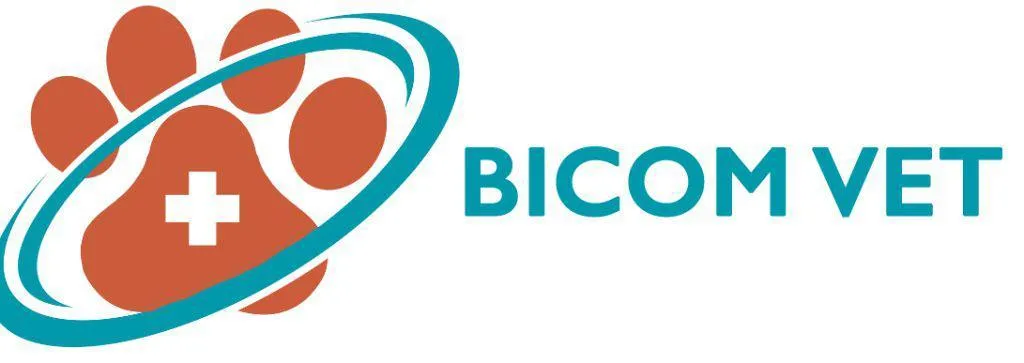BICOM® Bioresonance
Stress-free for pets and pet owners Suitable for all types of animals
There are many dogs , cats and horses suffering from health problems worldwide.
Be it problems with the musculoskeletal system, allergies and food intolerances or chronic diseases.
Sometimes, as an animal owner, you are at a loss when you can’t get any further with conventional therapy methods.
Like acupuncture or homeopathy, bioresonance belongs to the field of complementary medicine and is intended to be a useful supplement to conventional medicine.
It works with the body’s own wavelength of the four-legged friend, is used without medication and is painless to use.
Of course, not all health problems can be resolved with bioresonance. It is best to talk to a veterinarian or animal naturopath.
With our therapist finder you can find the nearest practice that can offer you BICOM® bioresonance.
Pain-free testing and therapy
Treatment with the BICOM® device is painless and stress-free. Especially sensitive animals feel very comfortable and it often happens that they completely relax and come to rest during the therapy.
Bioresonance has no harmful side effects and is used without medication.
Occasionally, initial aggravations, in what is known as the body’s initial reaction, can occur. However, these fade away after a short time.
What Pet Owners are saying..

Is Bioresonance Safe for Pets? Risks & Facts for Vets
Is Bioresonance Safe for Pets? What Veterinarians Should Know
Bioresonance therapy, an alternative treatment claiming to diagnose and treat ailments by using electromagnetic waves, has gained popularity in both human and animal healthcare. It has been marketed as a non-invasive, drug-free solution for various conditions in pets. However, the safety and effectiveness of bioresonance therapy, particularly for pets, remain contentious topics among veterinarians. In this blog, we’ll explore the dangers of bioresonance and what veterinarians should know to make informed decisions about its use in pets. Understanding the risks involved in bio resonant therapy is crucial for professionals responsible for animal welfare.
What is Bioresonance Therapy?
Bioresonance therapy operates on the principle that every organism, including animals, emits its own electromagnetic frequencies. Practitioners claim that diseases or imbalances in pets result from distorted frequencies within their bodies. Bioresonance devices are said to detect these frequencies and adjust them to promote healing. However, this theory lacks substantial scientific backing, and the mechanisms behind how bioresonant therapy could work remain unclear.
The therapy involves placing electrodes on the pet’s skin, which are connected to a machine that reads the pet’s frequencies. The device then supposedly corrects any imbalances by emitting counter-frequencies. While this may sound appealing as a non-invasive and holistic treatment, it’s essential to evaluate the potential dangers of bioresonance before recommending or using it on pets.
The Dangers of Bioresonance for Pets
Lack of Scientific Evidence
The most significant danger of bioresonance therapy is the absence of scientific evidence supporting its effectiveness. No robust studies demonstrate that bioresonant devices can accurately diagnose or treat any condition in pets. Without proper research, it is difficult to ascertain whether bioresonance is genuinely beneficial or merely a placebo. Using unproven treatments on animals can delay more effective, evidence-based interventions, posing a serious risk to their health.Misdiagnosis and Missed Treatment
Bioresonance therapy often promises to diagnose a wide range of illnesses, from allergies to chronic diseases. However, since the devices are not scientifically validated, there’s a real risk of misdiagnosis. For example, a pet with a treatable condition might receive a wrong diagnosis, leading the owner to focus on bioresonance therapy rather than seeking proven medical treatments. This delay in proper care can worsen the animal’s condition and, in severe cases, lead to life-threatening consequences.False Sense of Security
Pet owners who believe in the benefits of bioresonance may develop a false sense of security, thinking that their pets are being effectively treated. This belief can lead to negligence in following up with conventional veterinary treatments. In reality, bioresonance therapy is not a substitute for professional veterinary care, and relying solely on it could compromise the pet’s well-being. Veterinarians should inform pet owners about the dangers of bioresonance, emphasizing the importance of conventional treatments for diagnosed conditions.Unregulated Devices
Another danger of bioresonance therapy is the lack of regulation surrounding the devices used. Unlike medications or veterinary equipment, bioresonant devices do not undergo rigorous testing to ensure they are safe or effective. There is no standardized protocol for their operation, and anyone can manufacture and sell these devices without meeting strict safety criteria. This lack of regulation raises concerns about the quality and safety of the therapy administered to pets.Potential Stress and Discomfort for Pets
Although bioresonance therapy is promoted as non-invasive, the experience may still be uncomfortable for some pets. Having electrodes attached to their bodies, along with the unfamiliar sensation of the device in operation, can cause stress, especially in anxious animals. Pets often communicate discomfort through subtle behaviors, and the additional stress of such therapy might aggravate their condition. Veterinarians should weigh the potential stress that bioresonance can cause against any unproven benefits when deciding whether to recommend it.Untrained Practitioners
Bioresonance therapy can be administered by individuals with varying levels of training, from veterinarians to non-veterinary practitioners. This inconsistency poses a danger, as unqualified practitioners may not have the expertise to properly diagnose or treat animals. Without the necessary knowledge of animal physiology and veterinary medicine, there is an increased risk of misdiagnosis or inappropriate treatment, which can further endanger the pet’s health. Veterinarians should caution pet owners about the risks of seeking bioresonance therapy from unlicensed or underqualified practitioners.Lack of Individualized Care
Each pet is unique, and their healthcare should be customized to their specific needs. However, bioresonant therapy often follows a one-size-fits-all approach, with limited customization based on the individual animal’s condition. This lack of personalized care can be dangerous, especially for pets with complex or chronic health issues. By contrast, veterinarians provide individualized treatment plans based on a thorough understanding of the animal’s medical history, current condition, and specific needs.
What Veterinarians Should Consider
Given the potential dangers of bioresonance therapy, veterinarians must approach this treatment with caution. Here are key factors to consider when evaluating its use:
Evidence-Based Practice
Veterinarians are guided by evidence-based medicine, which involves using treatments that are supported by scientific research. Since bioresonance lacks reliable evidence, veterinarians should remain skeptical of its effectiveness and prioritize proven medical interventions. Educating pet owners about the dangers of bioresonance can help prevent them from turning to unproven therapies and ensure that pets receive the care they need.Client Communication
It’s essential for veterinarians to have open, honest conversations with pet owners about bioresonance therapy. Many owners may be drawn to alternative treatments out of concern for their pets’ well-being, hoping for a solution that avoids drugs or surgery. Veterinarians should explain the risks, including the lack of scientific validation and the potential dangers of bioresonance, while highlighting the importance of conventional veterinary care.Balancing Holistic and Conventional Approaches
Some veterinarians may be interested in offering holistic therapies alongside conventional treatments. While integrative medicine can provide benefits in certain cases, it is important to ensure that any alternative therapies, such as bioresonance, are backed by research and do not pose risks to the pet. Veterinarians should carefully assess the safety and efficacy of all treatments and avoid using bioresonant therapies until there is stronger evidence to support their use.Ethical Responsibility
Veterinarians have an ethical responsibility to protect the health and well-being of their patients. This means avoiding treatments that have not been proven safe or effective. Offering or endorsing bioresonance therapy without clear evidence could compromise a veterinarian’s ethical obligations, especially if it leads to harm or delayed treatment for the animal. Veterinarians must prioritize the pet’s welfare above all else and remain cautious about using unproven therapies like bioresonance.
Conclusion
In conclusion, bioresonance therapy presents several dangers for pets, including the lack of scientific evidence, misdiagnosis, and potential harm from unregulated devices. While it is marketed as a safe and holistic treatment, veterinarians should be aware of the risks and exercise caution before recommending it to pet owners. Educating clients about the dangers of bioresonance and encouraging evidence-based veterinary care will help ensure the health and safety of their pets.
Veterinarians should remain informed and prioritize treatments that are proven to be safe and effective. Until more research supports the use of bioresonance in veterinary medicine, it is advisable to steer clear of bioresonant therapies and focus on established, evidence-based practices.
To find a vet near you please complete the form below
Quick Links








Facebook
Instagram
Mail